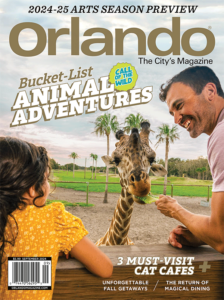Conservation Guide: 10 Fun Facts about Manatees
- Manatees average 3 m (10 ft.) and 363 to 544 kg (800 to 1,200 lbs.). Manatees have paddle-like tails and fore flippers, and no hind limbs.
- Manatees belong to the mammalian order Sirenia. There are three species of manatee: Trichechus inunguis, the Amazonian manatee; Trichechus senegalensis, the West African manatee; and Trichechus manatus, the West Indian manatee. Scientists also recognize two subspecies of West Indian manatee: T.m. latirostris, the Florida manatee, and T.m. manatus, the Antillean manatee. The order Sirenia has one other living species, the dugong. A fifth species, Steller’s sea cow, was hunted to extinction by 1768.
- All manatees inhabit tropical and subtropical waters of North and South America and Africa. The West Indian and West African manatees live in rivers, bays, estuaries, and coastal areas. They can move freely between freshwater and saltwater habitats. The Amazonian manatee is restricted to the freshwater Amazon basin.
- All manatees are herbivores. The Florida manatee feeds on more that 60 varieties of grasses and plants. A manatee’s only teeth are molars, for grinding vegetation. Some research suggests that manatees periodically require fresh water. West Indian manatees have been seen congregating at river mouths and drinking from hoses, culverts, and sewage outfalls.
- A female manatee, called a cow, can give birth about once every three years. Gestation lasts about 12 months. At birth, West Indian manatees measure about 1.2 to 1.4 m (4 to 4.5 ft.) and weigh 27 to 32 kg (60 to 70 lbs.). A calf nurses from teats under the mother’s pectoral flippers.
- Florida manatees are highly susceptible to cold; it’s not unusual for them to die during extremely cold weather. But human activities pose a much greater threat to manatees. Each year, many Florida manatees are killed and injured by watercraft, the greatest human-induced cause of Florida manatee deaths. Other threats include entanglement, poaching, and habitat destruction. All manatees are threatened or endangered. They are protected by national and local legislation in every country in which they are found.
- Manatees are nonaggressive, nonterritorial herbivores that spend most of their time feeding (six to eight hours per day) and resting (two to 12 hours per day). The remainder of their day is spent traveling, investigating objects, and socializing by interacting with other manatees.
- Marine zoological parks such as SeaWorld help conserve manatees. SeaWorld is authorized to rescue and rehabilitate ill, injured, or orphaned manatees. The first priority of the Manatee Rescue and Rehabilitation program is to return healthy manatees to their natural habitat.
- Manatees emit sounds under water. The chirps, whistles, or squeaks are probably produced in the larynx. They seem to make these sounds when they are frightened, sexually aroused, or interacting with each other.
- Manatees have well-developed eyes. In the water, they can detect objects from tens of meters away. A manatee’s retinas contain both rod and cone cells, indicating that they probably have the ability to see both dim and bright light. Recent tests suggest manatees can distinguish between blue and green colors, although the full extent of their color vision is unknown, and more studies are needed.
Courtesy: SeaWorld Parks & Entertainment Orlando
Home | Building Back Safer After Hurricane Ian | The Florida Wildlife Corridor | 10 ways to connect (with) the Florida Wildlife Corridor | The Tree That Was a Testament to Time | SeaWorld Expands Manatee Care Facility | 10 Fun Facts about the Manatee | Conservation Guide Map




